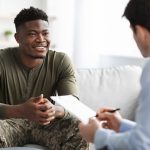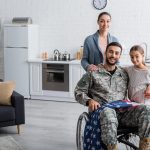The issue of Toxic Exposure Risk Activity (TERA) remains a significant concern among veterans globally. These individuals, dedicated to ensuring the safety and security of their countries, often find themselves exposed to various toxic elements that pose substantial health risks. Therefore, understanding TERA is not only critical for their welfare but also serves as a crucial step in the establishment of effective policies. One pivotal development involving TERA and its handling by Veterans Affairs (VA) is the TERA memorandum. The introduction of this memorandum has diverse implications for veterans’ welfare and the manner in which the VA manages toxicity risk activities.
Understanding Toxic Exposure Risks
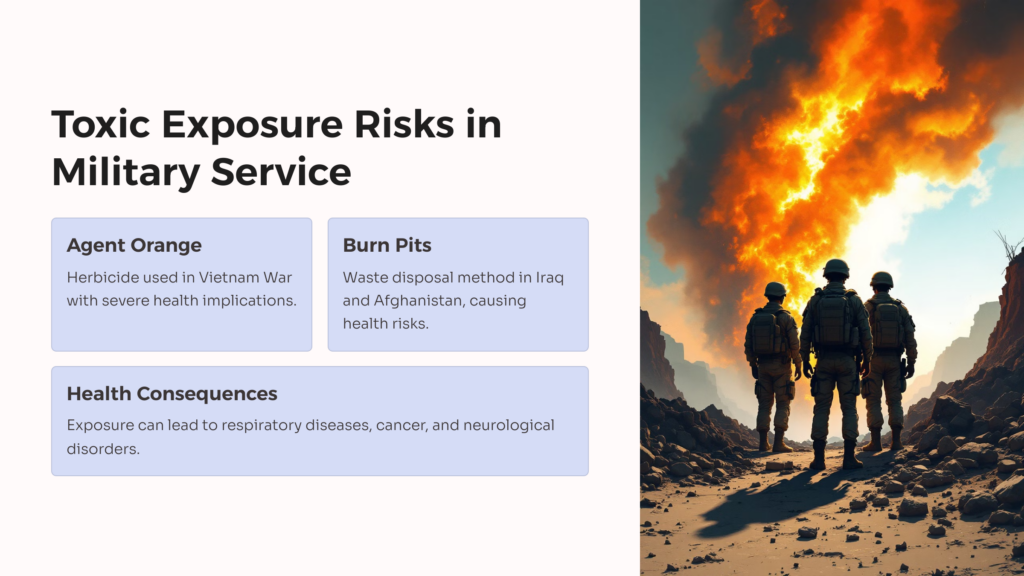
Toxic exposure risks are primarily due to the environments and situations that veterans encounter during their military service. They might be exposed to harmful substances either through inhalation, skin contact, or even ingestion. These toxicants could encompass chemical, radiation, or biological hazards, all of which may present varying degrees of health risk.
One primary form of toxic exposure veterans often face is that related to Agent Orange, a herbicide utilized during the Vietnam War, with severe health implications. Another is the exposure to burn pits, applied for waste disposal in military bases, notably in Iraq and Afghanistan. Both types of exposure can lead to a sequence of prolonged health disorders, such as respiratory diseases, cancer, heart conditions, and neurological disorders. These implications underline the critical necessity to understand and adequately manage VA benefits and TERA.
The Role of the VA in Veterans’ Health Care

The VA plays an indispensable role in managing the potential health risks that veterans face due to toxic exposure. The organization is tasked with providing health care and disability compensation to veterans who suffer illness or disability related to their active duty. However, the adequacy of its offerings, especially concerning veterans with toxic exposure, has been an ongoing debate.
Maintaining the health and well-being of every military service member and veteran is a multifaceted responsibility for Veterans Affairs, encapsulating prevention strategies, timely diagnosis, and effectual treatment of potential health disorders stemming from TERA. These responsibilities demanded by the toxic exposure risks underline the VA’s critical role in managing TERA.
The TERA Memorandum: An Overview
The TERA memorandum, aimed at better protection for veterans, was introduced out of this pressing need to safeguard veterans’ health. This document is a testament to the acknowledgment of the significance of TERA and the repercussions it could have on those who serve. The memorandum covers extensive points directing the VA to make changes to their existing processes.
Key points within the memorandum include devising a pre-service health baseline, improving the electronic health record system, conducting occupational environmental health site assessments, and improving the VA’s ability to identify and treat health conditions associated with toxic exposure. These crucial points serve as the foundation of a more robust system for managing toxic exposure risks within the VA.
The TERA Memorandum and Its Impact On The VA
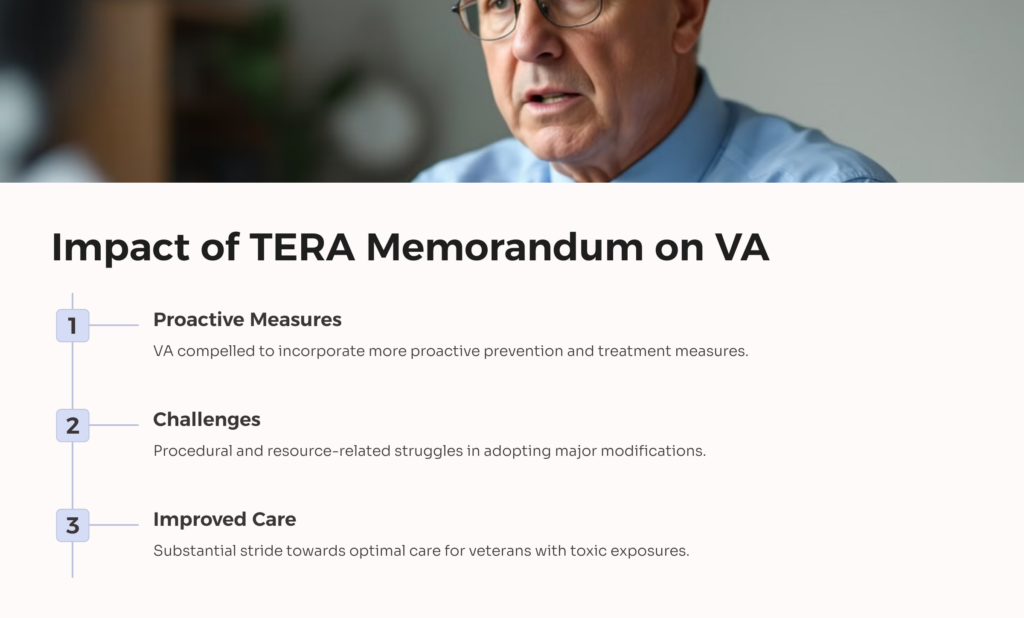
The TERA Memorandum has a sizable impact on the VA’s protocols regarding toxic exposure. It compels the VA to alter their existing obligations toward veterans by incorporating more proactive measures that both prevent and treat health issues related to toxic exposure. This redefining process provides VA benefits, including more thorough health care provision and access and a greater understanding of the effects of toxic exposures.
However, the memorandum could also present challenges. These may include the procedural and resource-related struggles the VA might face while adopting these major modifications. Yet, despite these challenges, the TERA memorandum remains a substantial stride toward optimal care for veterans suffering from exposure to chemical or biological hazards during their active duty.
Case Studies
The TERA memorandum’s implications have already begun to manifest within the VA, with numerous veterans benefitting from its implementation. For instance, a service member exposed to burn pits now has their exposure documented in their health record. Moreover, increased research and understanding of the health implications of such exposure have led to better diagnostic procedures and treatment options.
These cases are vital examples illustrating how significant the TERA memorandum’s impact on the welfare claims of veterans. They also underscore the fact that adhering to the memorandum’s directives could alleviate some of the intense health burdens faced by veterans due to their exposure to toxicants during military service.
Criticisms and Controversial Aspects of The TERA Memorandum
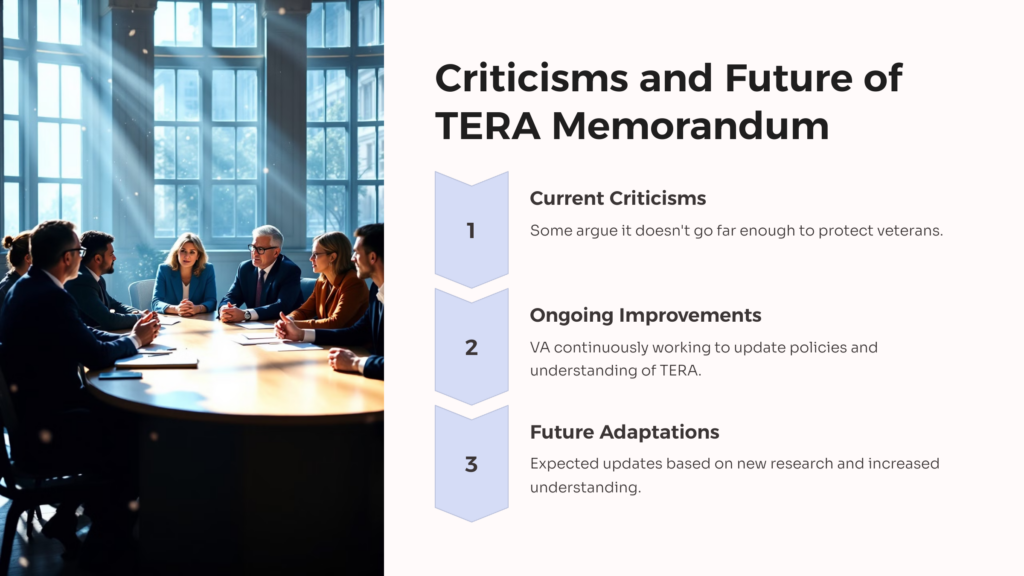
Despite its positive strides, the TERA memorandum is not without criticisms. Some critics argue that while the memorandum initiates change, it does not go far enough to protect veterans. They contend that certain conditions linked to toxic exposure, such as certain rare forms of cancer, are not covered under the VA’s disability compensation scheme.
In response, the VA points out that they are consistently working to improve their understanding of TERA, which includes updating their policies to ensure that veterans receive necessary care and compensation. These debates underline the fact that, while the TERA memorandum represents progress, there is still room for improvement.
The Future of the TERA Memorandum
The future of the TERA memorandum is likely to involve updates and changes that reflect increased understanding and new research findings regarding toxic exposure. These adaptations are expected to prompt the VA to continually improve their treatment protocols and adjust their policies.
In the long run, this process will ideally enhance the welfare of veterans, ensuring they receive the support and healthcare they need to handle the physical repercussions of their selfless service. It also means that the VA will continue to face the challenge of evolving alongside new understandings of TERA.
Conclusion
The importance of the TERA memorandum within the scope of veteran care cannot be overstated. It embodies a necessary step toward acknowledging, understanding, and effectively managing the health risks associated with toxic exposures. While the memorandum indeed presents a new set of challenges and criticisms for the VA, it also offers opportunities for improved healthcare provision and understanding of TERA.
There are undoubtedly areas within the TERA memorandum requiring further investigation and contemplation to grasp its full impact fully, yet this should not diminish the significant strides the memorandum represents. As with any such comprehensive policy changes, it must be given time, study, and thoughtful consideration to fully harness its potential benefits on veterans’ health and welfare.
 AllVeteran.com Advisors
AllVeteran.com Advisors
With expertise spanning local, state, and federal benefit programs, our team is dedicated to guiding individuals towards the perfect program tailored to their unique circumstances.


